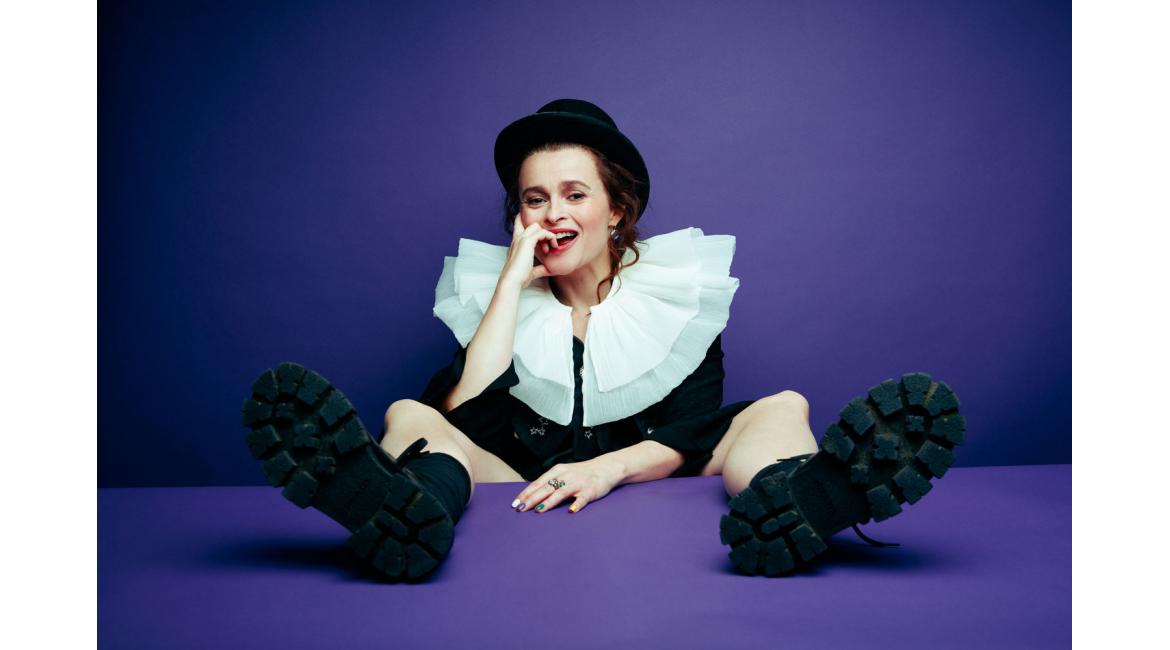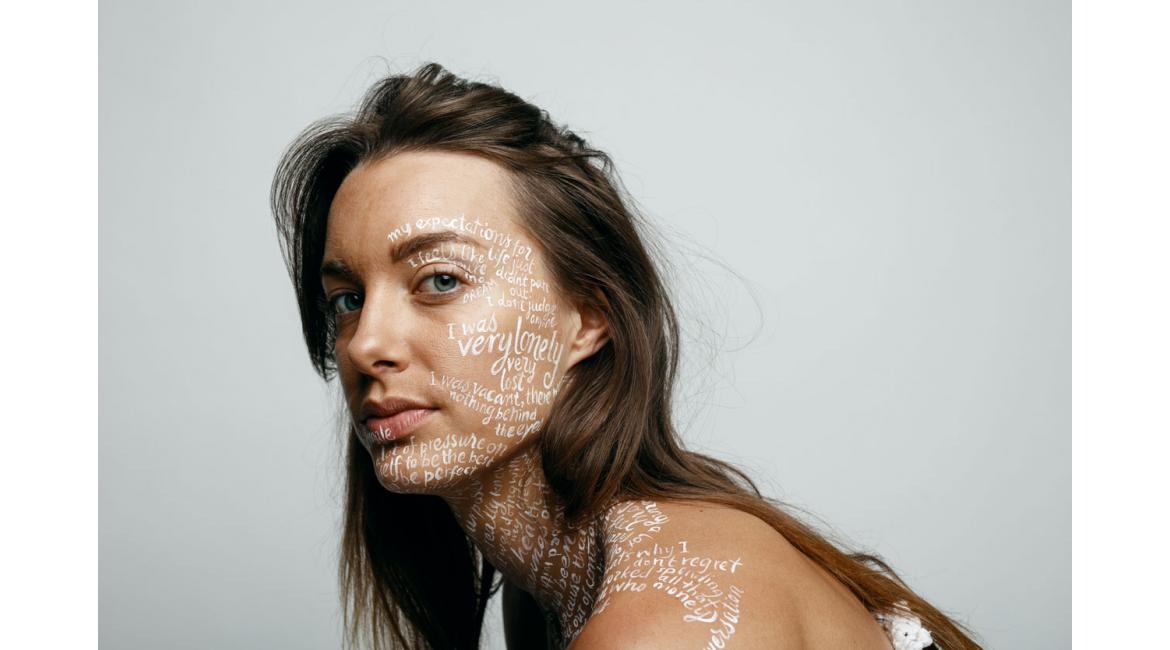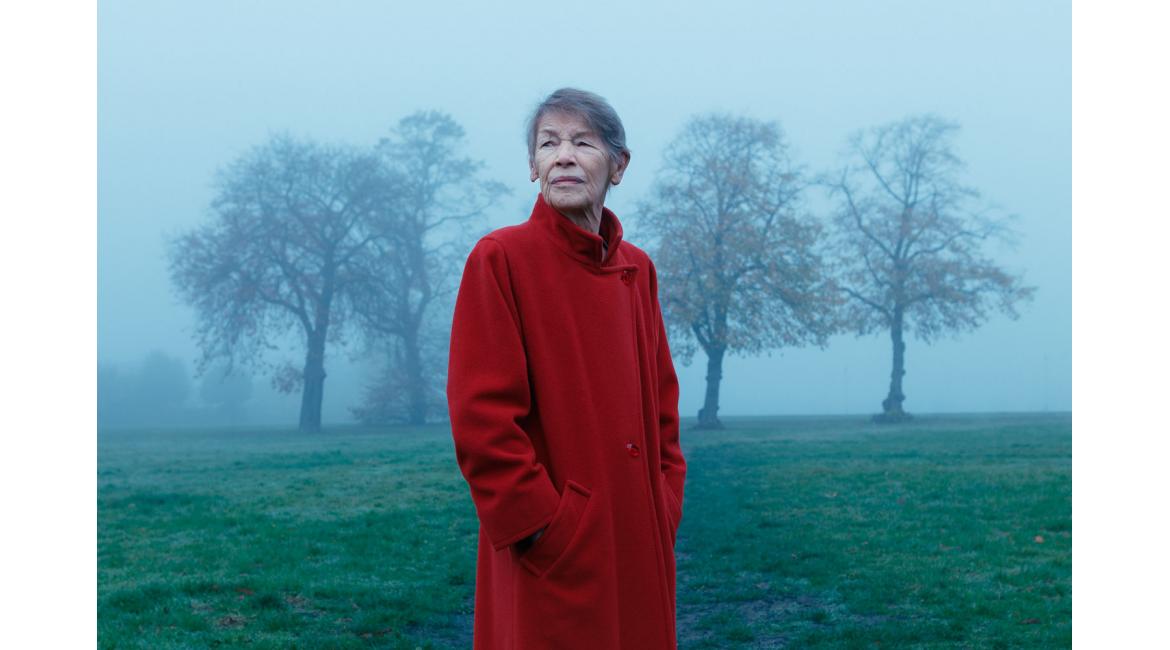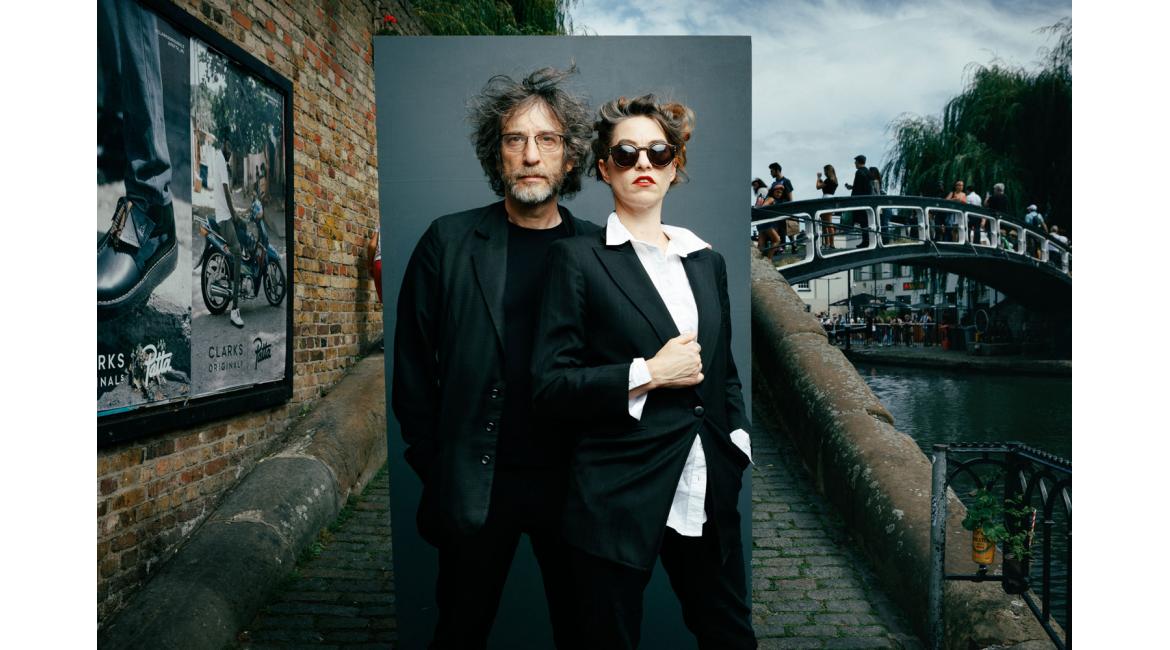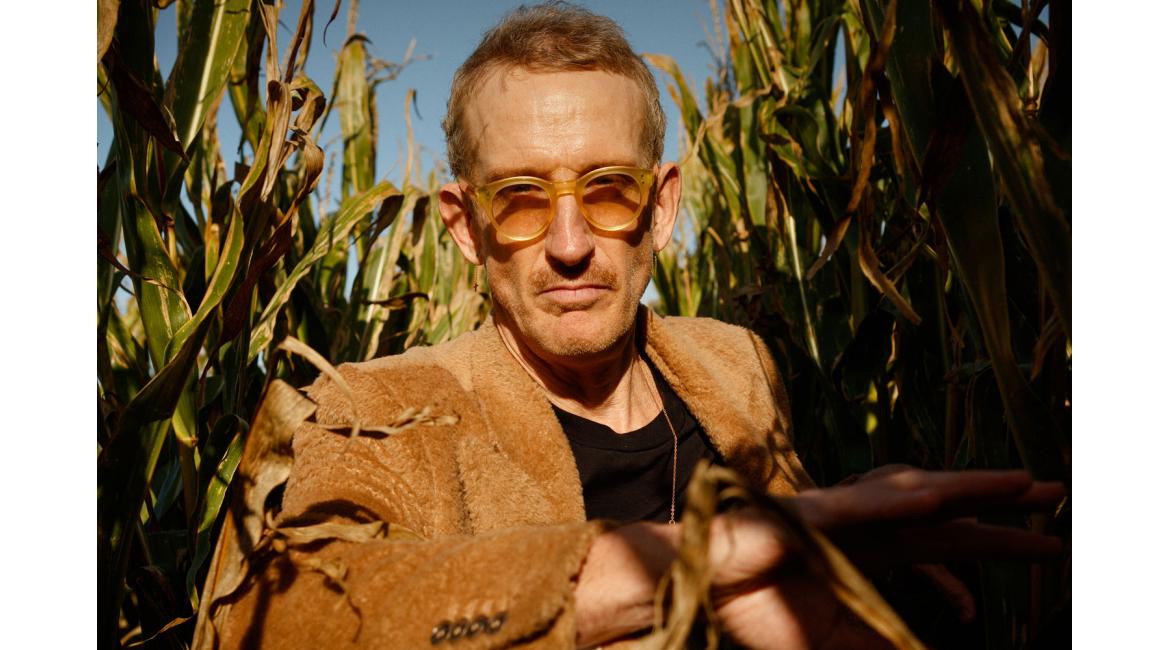Photographer and Director, Charlie Clift promotes “Let’s Talk”, so we reached out and did just that!
Read on to find out exactly what we talked about starting with himself, his work, mental health, creating and learning from happy mistakes…

Who, what, why, when, how did you get into the industry?
I’m a photographer and director living in London, I love telling people’s stories, and collaborating with performers and creatives. I work with a big variety of clients including The Sunday Times Magazine, BAFTA, GQ, The Poppy Appeal, and Coca Cola.
I started photographing when I was at university in Bristol studying psychology. And as soon as I finished my degree I dived straight into photography as a career. I spent a couple of years assisting other photographers, but I was always shooting lots for myself at the same time, working with magazines and building my own clients. After a couple of years, I got too busy shooting my work to assist others anymore.
To keep things fresh I’ve always created personal projects, like my mental health campaign Let’s Talk or my short film about life in the circus. These projects help me experiment with new ideas and also show my clients new ways of doing things.
You shot Actor and British stalwart extraordinaire, Helena Bonham Carter for Channel 4 dressed as a clown, can you tell us a little about the project?
Channel 4 asked me to promote their big Christmas animation of Quentin Blake’s ‘Clown’ by photographing the show’s narrator, Helena Bonham Carter. It seemed obvious to me, if Helena was up for it then I wanted to dress her as a clown for the promo shots. Carl Palmer, the picture editor, agreed (top man). So we put together a deck of our ideas and pitched it. To be honest I was nervous that the production team would say no, that our ideas were a bit too out there. But I was wrong. Helena’s response to the pitch was: “clear the entire afternoon, I want to do this photoshoot properly!” And so we did.
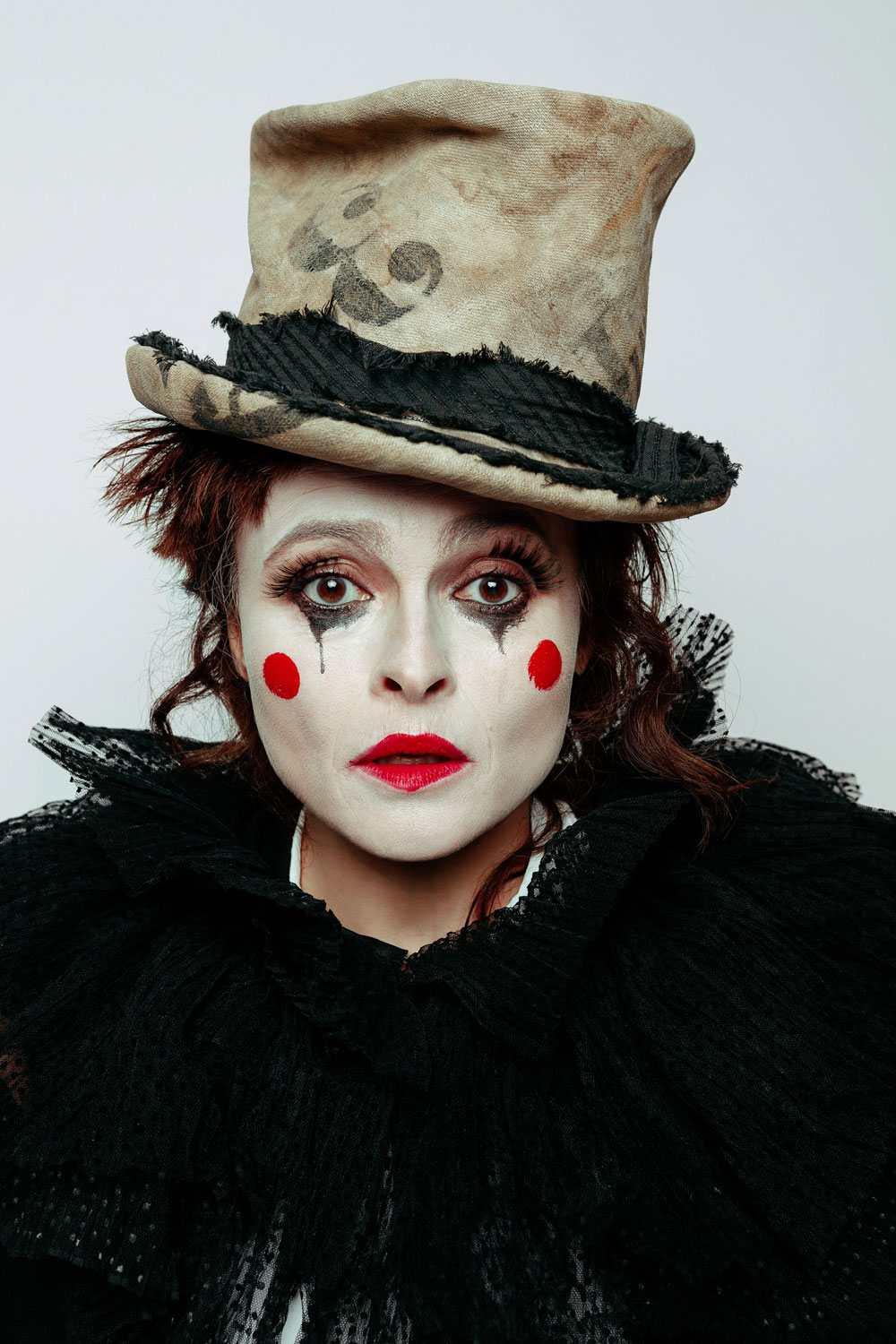
From the behind the scenes clip, we can see below, Helena is a natural in front of the camera, did she require much ‘direction’ from yourself?
Collaborating with Helena was a total dream. Before the shoot started she brought on board brilliant costume designers to help her create the perfect outfit, plus amazing hair and makeup artists to make the clown look. On the day she dived headfirst into our shoot with so much energy and enthusiasm, taking my ideas, bettering them and throwing them back at me. Directing someone like Helena is a process, you keep pushing each other on to try new things, you each inspire each other – it was such a fun and collaborative way to work.
These promotional images for Channel 4 are filled with fun and enjoyment. However, all your shoots aren’t necessarily as light-hearted and joyful. Which brings us to the project “Let’s Talk”, can you explain what this was about and is it of any personal significance to yourself?
Let’s Talk is a campaign I created to help people to talk more openly about mental health. The images feature people who have struggled with their mental health, they each have some of their most difficult thoughts written straight on to their face. I worked closely with the lettering artist Kate Forrester to create the images. I first interviewed each person to find out their first-hand experience of their mental health struggles, from people who have tried to kill themselves to people who suffer daily with anxiety attacks. Kate and I then selected the most poignant words and phrases. Then on the day of the shoot, Kate would spend 2-4 hours drawing the beautiful letting onto the people’s faces, and finally, I would photograph them. I was really moved by how open and honest the participants were with me. It took a lot of courage to take part, but the images have really helped people. They were first shown as an outdoor exhibition touring around central London, and have since been featured in offices, galleries and other places to help encourage people to talk more. We all need to talk more about our mental struggles, and if people aren’t certain how to start that conversation I hope that my photos can provide a way to do that.
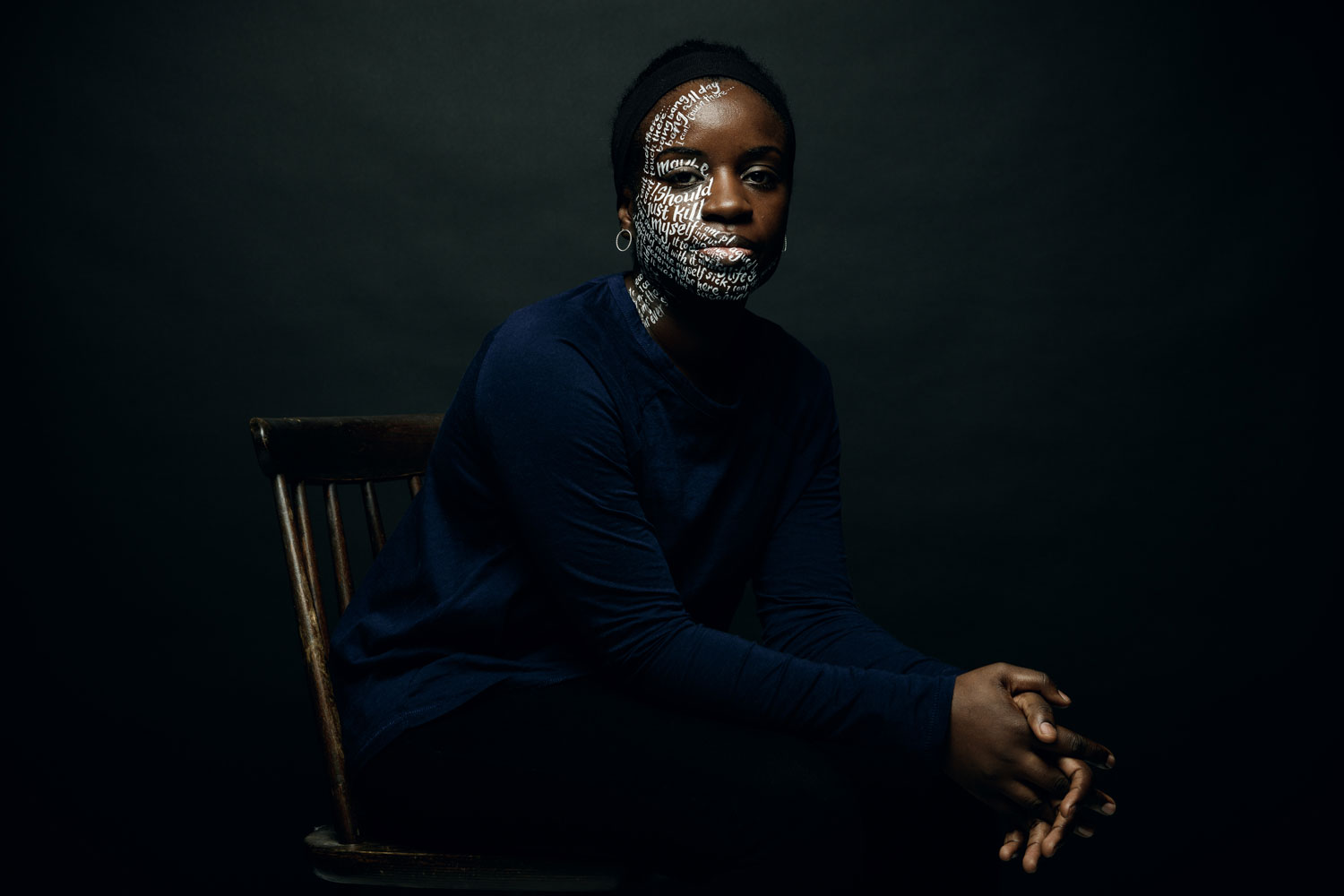
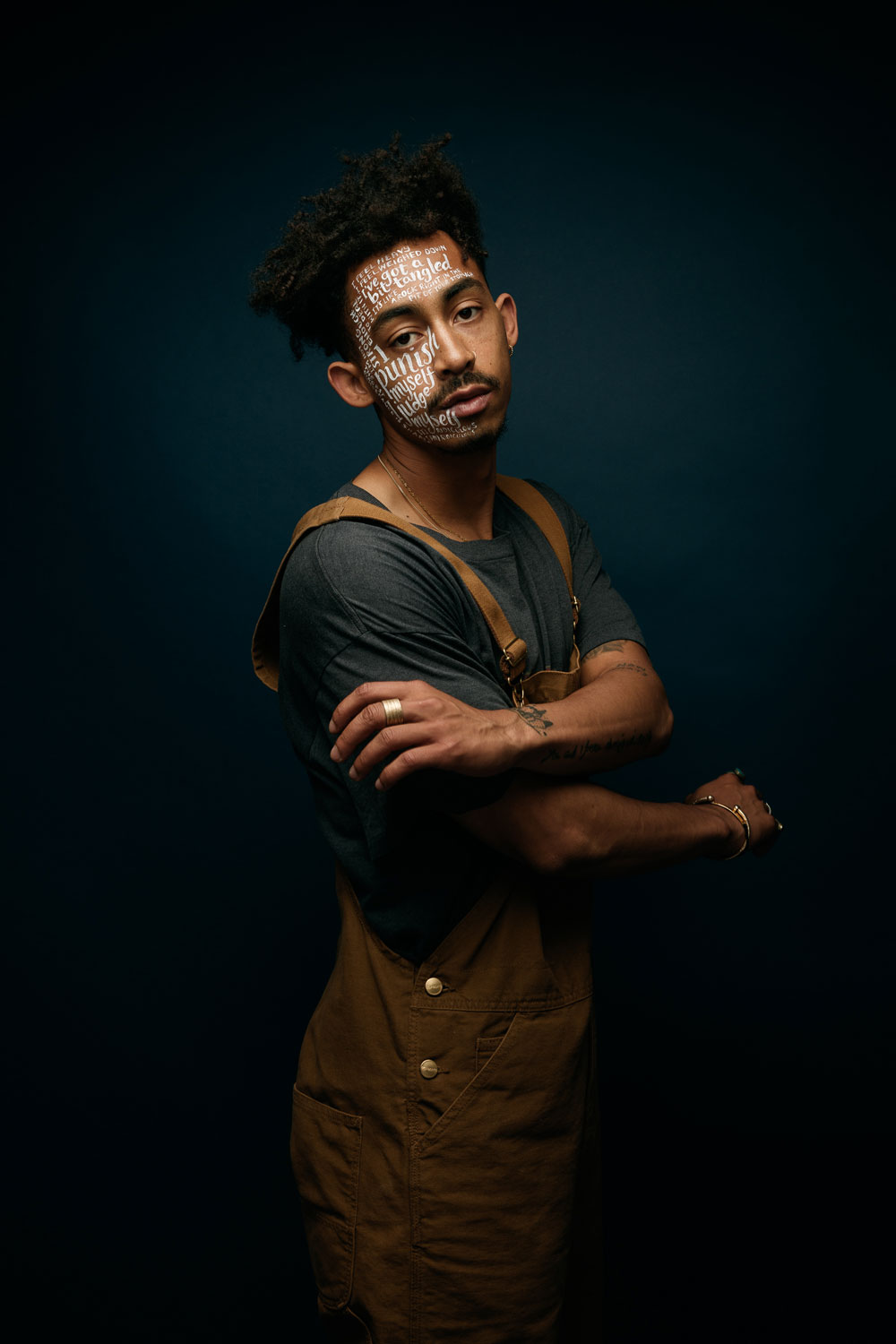
Where or how do you begin to research and tackle the tougher subjects?
I think being honest and open with people is key, if you show genuine compassion and interest in people they will trust you, and then of course you need to honour that trust. I was totally open from day one with the participants in Let’s Talk, I made sure they knew what they were getting into and that they could withdraw from the project at any time if they felt uncomfortable. In the end, many of them have told me that they found the process really therapeutic, which is a wonderful thing to hear.
Every project is unique and needs a different approach. I often do a lot of research before I start any creative planning. Let’s Talk was an especially personal project, it started as a desire to talk about my own depression. I was really hit by depression whilst I was at university and had to drop out of my studies for a year. But opening up and talking about my problems helped me recover, so I was keen to find a way to help others talk more. I turned to my photography to do that.
Your images of London Mayor, Sadiq Khan typify the current situation of how most of the country is feeling with the lockdown. Funnily enough, this was your first shoot since lockdown 1… tell us about how you’re finding the current climate and working in it?
Thankfully I have still been able to shoot, and have actually managed to do some really wonderful projects despite the pandemic. Of course, I follow all the guidelines and take the health of everyone I’m working with very seriously, but that hasn’t stopped me from creating some exciting images. It is easy to get downhearted by what’s happening, and I certainly do at times. But I’m trying to look upon the changes as an opportunity, clients are being forced to try new things and as a creative, I am really keen to lead in that.
I’ve been pitching new approaches to clients and have found that many of them have been taken up. For example, I did a recent project with Bafta photographing their TV Award Winners. When I photographed the same project last year I was backstage at the awards and only had a minute with each winner, but this year the ceremony was moved online, so I had to do things differently. This time I photographed each award winner separately, which gave me the opportunity to be really collaborative, tailoring the approach around each winner’s story and personality.
Have any banana loaves of bread been baked? How else have you been spending your time?
I’ve been spending my free time working on personal projects, as well as trying to help support the community get through this time by promoting the incredible work my local food bank is doing. I’m currently working with a dancer and a composer to make a film together – it’s looking like it’ll be amazing. And I’m also writing a script for a short narrative piece. So lots of new things, but I do love a creative challenge.
Why do you choose to rent equipment through Direct Digital?
I’ve always found the team at Direct super helpful and supportive, that’s vital when you have a creative problem that you need to solve. They are always full of advice and have many times helped me do something I wasn’t sure how to to do. Building strong relationships is so important to making a creative career, so it’s wonderful knowing that Direct are there to help when I need them.
What’s the one piece of kit you cannot do a shoot without and why?
It must be the kit lens on my Canon camera – their 24-70mm F2.8 L. I think I’ve used that lens on every single shoot I’ve done. I also love a 5ft Octabox, it’s such a versatile lighting modifier, you can create sunshine, soft pools of light and everything in between with it. I take those two things on every shoot.
Have any ‘happy’ mistakes led to creating something unthought-of that wouldn’t have happened otherwise? If so, what was the outcome and what did you learn from it?
I like to think that portrait shoots are kind of controlled chaos, you need to encourage the unexpected and be open to it. When I was photographing the director of Chernobyl, Johan Renck, for Bafta, I had planned to capture him by the sea, waves breaking in the background. I spent the whole morning scouting the location, planning all my shots one by one, then on the way to meet with him I spotted a field full of tall wheat. I suddenly had this thought – wouldn’t it be cool if he ran through that wheat? We ended up spending the first 10 minutes of our shoot in that field, before going on to photograph in the places I had planned before. Those images from the field are definitely my favourites from the set, I much prefer them to the ones I planned.
We enjoyed watching your portfolio showreel. In the clip we hear you quote the line ‘creating that moment of connection’… is that what it’s all about for you, capturing and bringing to the screen that particular moment from your sitter?
Totally, those are the moments I live for, they are really exciting. I do everything possible to encourage those moments to happen, and when they do, that’s when you get the best photographs.
Here’s Charlie narrating and talking in further depth about his work…
Charlie Clift: Website | Instagram | Twitter | Email | Agent

